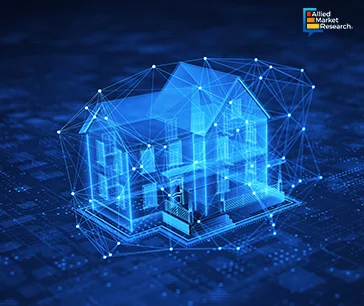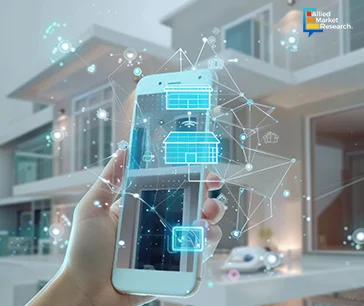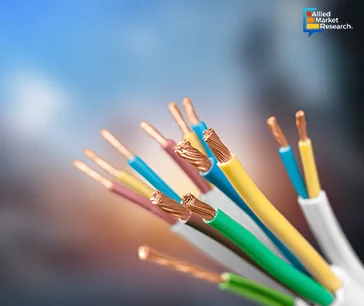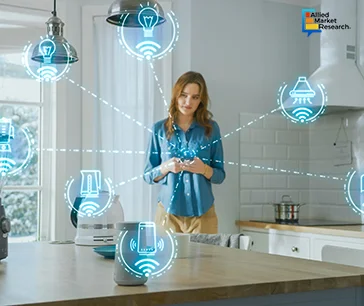Table Of Contents
- Evolution of Smart Wiring Devices: From Basic Controls to Advanced Integration
- Smart Wiring Devices Market in Last decade
- Benefits of Smart Home Wiring
- Technologies Used in Smart Wiring Devices
- Technological Challenges of Smart Wiring Devices Market
- Integration of Smart Wiring Devices with IoT and Smart Home Solutions
- Key Technological Advancements in Smart Wiring Devices Industry
- Future Insights into Smart Wiring Devices
- A Promising Market Prospect

Onkar Sumant

Ketki Gajanan Dongare
The Role of Smart Wiring Devices in Empowering Homes

Smart wiring devices revolutionize home connectivity by integrating advanced technology into electrical systems. These devices enable remote control, automation, and energy management, enhancing convenience and efficiency for homeowners. Smart wiring devices offer a holistic solution for modern living with features such as wireless connectivity, AI integration, and seamless interoperability. They provide users with unprecedented control over lighting, appliances, and security systems, paving the way for smarter, more interconnected homes of the future.
Evolution of Smart Wiring Devices: From Basic Controls to Advanced Integration
The evolution of smart wiring devices has undergone an extraordinary journey that has changed user relationship with living space from simple switches to advanced integration. In the 1970s, pioneering technologies such as X10 laid the groundwork for home automation by enabling basic communication between devices over power lines, which allowed for simple control of appliances and lighting remotely. The Wireless Revolution of the 2000s brought about significant advancements in smart wiring, particularly with the introduction of wireless protocols such as Zigbee and Z-Wave. These protocols facilitated faster and more reliable communication between devices without the need for physical wiring. Integration and AI, which enable devices to interact effectively with voice assistants such as Amazon Alexa, Google Assistant, and other platforms have elevated smart wiring technology. This shift has emphasized convenience, energy efficiency and security while introducing complex elements such as efficient power usage, improved safety features, personalized control for comfort, thus transforming the meaning of modern living.
Smart Wiring Devices Market in Last decade
Smart homes are on the rise due to various technological innovations and increase in consumer demand. Advancements in AI, IoT, and connectivity have made smart devices more accessible and user-friendly. These devices offer unparalleled convenience, allowing homeowners to control and automate various aspects of their homes remotely.

According to the world economic forum, 130 million households had at least one smart speaker in 2023 and this number is expected to rise to 335 million in the next 5 years. Rise in adoption of smart devices fuels demand for smart wiring devices due to the critical role they play in supporting and integrating these devices within the home environment. As more homeowners invest in smart thermostats, security cameras, lighting systems, and other connected devices, the need for reliable connectivity and seamless communication between these devices becomes paramount.
Smart wiring devices serve as the backbone of the smart home infrastructure, providing the necessary physical and wireless connectivity to ensure smooth operation and interoperability. In addition, the growing complexity and scale of smart home setups necessitate robust wiring solutions that can accommodate the expanding network of devices. Thus, as the market for smart devices continues to expand, the demand for smart wiring devices is expected to rise in tandem, driven by the need for efficient, reliable, and scalable connectivity solutions in modern smart homes.
Benefits of Smart Home Wiring
Smart home wiring offers enhanced convenience, energy efficiency, and security, thus revolutionizing how users interact with living spaces:

Reliable Connectivity: Smart home wiring ensures robust and reliable connectivity between all smart devices, minimizing issues such as signal interference or dropouts commonly experienced with wireless connections.
Improved Performance: Wired connections typically offer faster data transfer speeds and lower latency compared to wireless connections, resulting in smoother performance for smart devices such as cameras, streaming media players, and gaming consoles.
Enhanced Security: Wired connections are less susceptible to hacking or unauthorized access compared to wireless networks, providing an additional layer of security for sensitive data and devices within the smart home ecosystem.
Consistent Power: Smart home wiring ensures a consistent and reliable power supply to all connected devices, reducing the risk of power outages or fluctuations that could affect device performance or cause data loss.

Scalability: A well-designed smart home wiring infrastructure allows for easy expansion and integration of new devices as technology evolves, providing flexibility and futureproofing for homeowners who wish to upgrade or expand their smart home setup over time.
Reduced Interference: Wired connections are less prone to interference from other electronic devices or environmental factors, ensuring stable performance for smart devices even in crowded or noisy environments.
Technologies Used in Smart Wiring Devices
Smart wiring devices use a variety of technologies to enable connectivity, communication, and automation within smart home ecosystems. Some of the key technologies commonly employed in smart wiring devices include, Wireless Connectivity: Smart wiring devices utilize wireless communication protocols such as Wi-Fi, Bluetooth, Zigbee, or Z-Wave to connect with other devices and networks. These wireless connections enable seamless integration and control of smart devices throughout the home.
Powerline Communication (PLC technology): This technology allows smart wiring devices to communicate over existing electrical wiring within the home. It is particularly useful for devices that require reliable communication over long distances or in environments where wireless signals may be unreliable.
Microcontrollers and Embedded Systems: Smart wiring devices typically include microcontrollers and embedded systems to process data, execute commands, and interface with other devices and networks. These components enable intelligent control and automation features, such as scheduling, scene setting, and remote access.

Sensor Technology: Several smart wiring devices incorporate sensors, such as motion sensors, light sensors, or temperature sensors, to gather data about the home environment. This data is used to automate actions, adjust settings, or provide insights into energy usage and occupancy patterns.
Cloud Connectivity: Smart wiring devices leverage cloud-based services to enable remote access, data storage, and software updates. Cloud connectivity allows users to control their devices from anywhere with an internet connection and provides access to additional features and services, such as remote monitoring and integration with third-party platforms.
Voice Control Integration: Smart wiring devices also support integration with voice assistants such as Amazon Alexa, Google Assistant, or Apple Siri. Voice control technology enables hands-free operation of smart devices, allowing users to control lights, switches, and other devices using voice commands.
Smart homes offer homeowners various advantages and conveniences. However, when envisioning a smart home, many tend to focus solely on the individual smart devices such as speakers, lights, and thermostats. However, underlying all these devices lies a crucial component, smart home wiring. Smart home wiring serves as the backbone of the smart network, facilitating seamless connectivity and ensuring optimal performance.
Technological Challenges of Smart Wiring Devices Market
While smart wiring devices and smart homes share common obstacles concerning interoperability, reliability, security, and user experience, they also face sector-specific challenges that require tailored solutions.
Interoperability: Ensuring seamless communication and compatibility between devices from different manufacturers remains a significant challenge. Lack of standardized protocols and proprietary systems is expected to hinder interoperability, limiting the ability of consumers to create cohesive smart home ecosystems.
Reliability and Connectivity: Smart wiring devices rely heavily on wireless connectivity, which is susceptible to interference, signal degradation, and network congestion. Ensuring reliable and stable connections, especially in environments with multiple devices, is crucial for optimal performance.
Security Concerns: Increased connectivity of smart wiring devices introduces potential vulnerabilities that are exploited by malicious actors. Ensuring robust cybersecurity measures, such as encryption, authentication, and secure firmware updates, is essential to protect against hacking, data breaches, and unauthorized access.
Power Management: Smart wiring devices require power to operate, which can pose challenges in terms of energy consumption and battery life. Optimizing power management strategies, such as low-power modes and efficient energy harvesting techniques, is essential for extending device lifespan and enhancing reliability.
Complexity of Integration: Integrating smart wiring devices into existing infrastructure or retrofitting older homes can be complex and challenging. Compatibility issues, wiring constraints, and compatibility with legacy systems may require specialized expertise and resources to overcome.
Data Privacy: Smart wiring devices collect and process sensitive data about users' behavior and preferences, raising concerns about data privacy and protection. Implementing robust privacy policies, data encryption, and user consent mechanisms is essential to safeguarding personal information and building trust with consumers.
Integration of Smart Wiring Devices with IoT and Smart Home Solutions
The growth of smart wiring devices has been exponential across residential and commercial applications, driven by increasing demand for connectivity, automation, and energy efficiency. In residential settings, smart wiring devices offer homeowners unprecedented control over lighting, appliances, and security systems, enhancing convenience and comfort. In commercial applications, these devices optimize energy management, improve operational efficiency, and enhance security measures. From smart thermostats and lighting systems in homes to advanced building automation systems in commercial spaces, the versatility and scalability of smart wiring devices cater to diverse needs. As technology continues to evolve, the adoption of smart wiring devices is expected to further accelerate, transforming both residential and commercial environments.
Key Technological Advancements in Smart Wiring Devices Industry
The competitive landscape of the smart wiring devices market is robust, largely due to the established presence of numerous manufacturers. Companies equipped with substantial technical and financial capabilities are expected to gain a competitive advantage over their competitors as they cater to market demands. The leading key player’s strategies include launch of technologically advanced products to sustain their position in the market. Some of the instances of advanced and unique product launches include,
In February 2022, ABB Ltd. launched a wide range of basic to advanced-level smart metering solutions for efficient energy management. The range covers all requirements of low to medium-voltage applications across industrial, commercial, and residential segments. The meters are designed to cover all requirements, from the measurement of basic electrical parameters to advanced power quality parameters.
In September 2022, Lutron Electronics expanded its product range by adding the Diva smart dimmer and the Claro smart switch to its portfolio. The Diva smart dimmer merges the unique aesthetic and user-friendly interface of the DIVA design with the Caséta portfolio, renowned as the industry's most interconnected smart lighting control system.
In November 2020, Schneider Electric launched a line of dimmer switches compatible with LED lighting, addressing the growing demand for LED technology. These LED dimmers enhance the performance of energy-efficient LED lamps by improving lamp longevity and facilitating additional energy savings.
In January 2023, Lutron Electronics revealed the availability of the Diva smart dimmer, providing homeowners and installers with expanded style and control options. This product introduces smart lighting controls that enable multi-location control through the use of the Pico smart remote. Also, the Claro smart accessory switch offers a wired alternative for multi-location control alongside the Diva smart dimmer, smart switch wiring, and Claro smart switch.
Future Insights into Smart Wiring Devices
In the future, smart wiring devices are expected to prioritize energy efficiency through advanced power management and optimization techniques. Smart wiring devices also feature enhanced sensor technology for more accurate data collection and environmental monitoring. User-centric design is bound to focus on intuitive interfaces and seamless integration with other smart home devices. Moreover, there is emphasis on sustainability, with smart wiring devices leveraging eco-friendly materials and energy-saving features. These advancements are anticipated to contribute to more efficient, sustainable, and user-friendly smart home environments, catering to the evolving needs and preferences of consumers.
A Promising Market Prospect
The smart wiring devices market is poised for significant growth driven by technological advancements. With a focus on innovation, including AI, connectivity, and security enhancements, the market is set to expand rapidly. Interoperability standards are expected to drive seamless integration between devices, while energy-efficient solutions and user-centric design are to enhance usability and sustainability. As smart homes become increasingly prevalent, the demand for intelligent wiring devices is expected to continue to rise, offering consumers greater convenience, efficiency, and control over their living environments. The market's outlook is promising, with ample opportunities for growth and development in the ever-evolving landscape of smart home technology.

